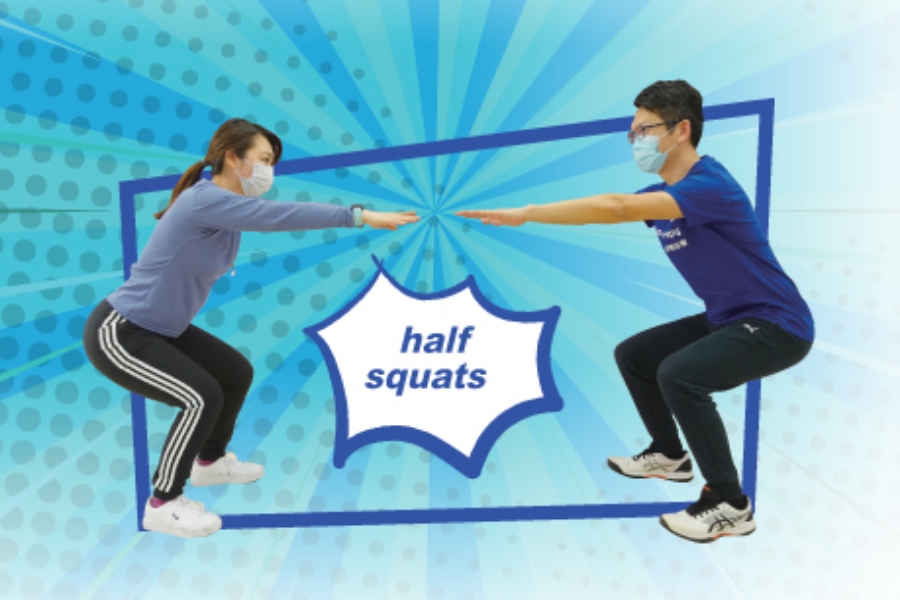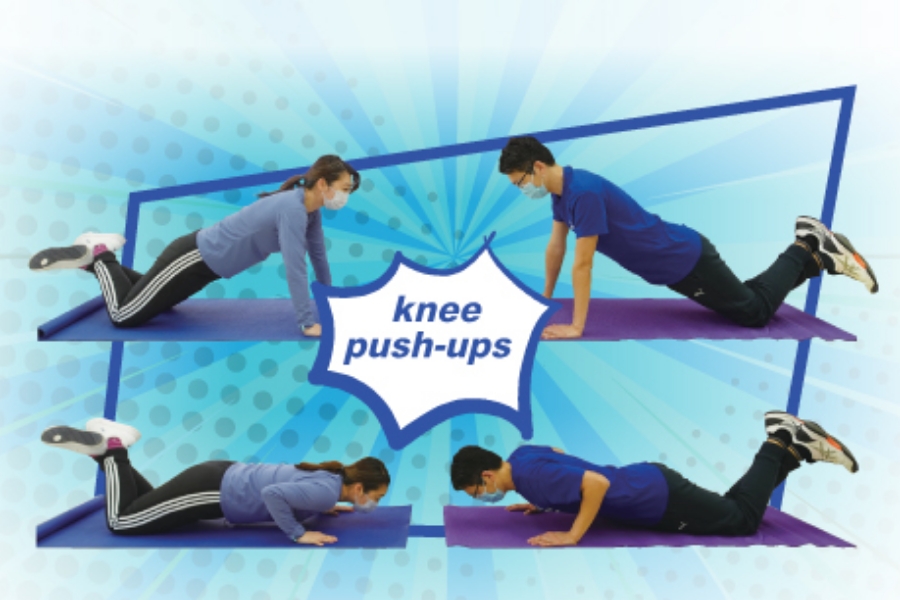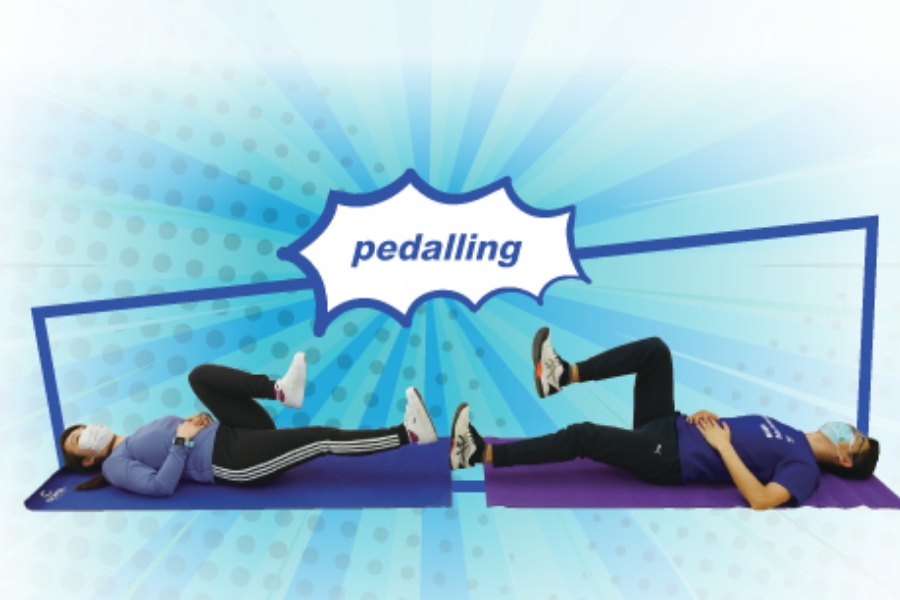Let’s get active! Anti-epidemic exercise at home
Amid the ‘tsunami-like’ COVID-19 outbreak, sickness and the fear of getting ill have undoubtedly caused much negative emotions in us. Exercise could definitely help boost up our immune system and mental strength, but various sports venues may be temporarily closed owing to the epidemic. HASLink invited several colleagues to share how they exercise at home. Let’s get active together!
Choose your own intensity for interval training
Winnie Cheung, Personal Secretary of United Christian Hospital (UCH) has been participating in various yoga and dancing courses in the past. But these activities were all suspended in light of the epidemic. Since then, she has not only found her physical ability deteriorating significantly, but also started craving for food. “During Lunar New Year, our family of four ate eight full containers of traditional Chinese New Year puddings! That was when I realised that I can’t be sluggish anymore.” Therefore, she started doing High Intensity Interval Training (HIIT) at home.
HIIT has been gaining popularity in recent years. It features a ‘workout and recovery’ mode with only a few minutes per cycle. These exercises help largely burn calories, resulting in fat-burning and muscle-building. As a beginner, Winnie initially assumed that HIIT was of a high demand of physical strength and stamina, but she discovered that it was actually much less demanding. With short bouts of workouts, it is easier for her to set aside some time for training. Now, she still managed to keep a routine of two to three trainings per week.
Kinson Li, Physiotherapist I of UCH encouraged colleagues not to be scared away with the words ‘high intensity’ but to start with Medium Intensity Interval Training (MIIT) and to level up according to one’s ability. Kinson emphasised that HIIT moves can be arranged with great flexibility. It is not necessary to choose specific moves and there is no constraint on the total exercise time. The calculation of target heart rates during workout is more crucial to adjust the intensity of exercise. In other words, everyone can customise their own training paths.
Kinson advised beginners to exercise according to one’s ability, for instance, overweight individuals should avoid jumping to reduce the burden of your knee joint. Kinson recommended to start with basic moves such as half squats, knee push-ups and pedalling. Newbies should rest at least 24 hours between workouts. Training three to four times a week is enough. Individuals suffering from heart diseases or the three highs – high blood sugar, high cholesterol and high blood pressure, should perform a body check beforehand and ought not to get started with high-intensity training.
HIIT has been gaining popularity in recent years. It features a ‘workout and recovery’ mode with only a few minutes per cycle. These exercises help largely burn calories, resulting in fat-burning and muscle-building. As a beginner, Winnie initially assumed that HIIT was of a high demand of physical strength and stamina, but she discovered that it was actually much less demanding. With short bouts of workouts, it is easier for her to set aside some time for training. Now, she still managed to keep a routine of two to three trainings per week.
Kinson Li, Physiotherapist I of UCH encouraged colleagues not to be scared away with the words ‘high intensity’ but to start with Medium Intensity Interval Training (MIIT) and to level up according to one’s ability. Kinson emphasised that HIIT moves can be arranged with great flexibility. It is not necessary to choose specific moves and there is no constraint on the total exercise time. The calculation of target heart rates during workout is more crucial to adjust the intensity of exercise. In other words, everyone can customise their own training paths.
Kinson advised beginners to exercise according to one’s ability, for instance, overweight individuals should avoid jumping to reduce the burden of your knee joint. Kinson recommended to start with basic moves such as half squats, knee push-ups and pedalling. Newbies should rest at least 24 hours between workouts. Training three to four times a week is enough. Individuals suffering from heart diseases or the three highs – high blood sugar, high cholesterol and high blood pressure, should perform a body check beforehand and ought not to get started with high-intensity training.
Learn the easy moves step by step



Calculate your own suitable exercise intensity
Formula of your maximum heart rate: 220 minus your age
When performing HIIT, your heart rate has to reach 80 to 90% of its maximum. For example, the heart rate of a 35-year-old adult should be somewhere between 148 to 166. MIIT requires 55 to 70% instead, i.e. heart rate falls between 102 to 130. Adjust your exercise volume and rest interval to ensure an appropriate intensity level.
When performing HIIT, your heart rate has to reach 80 to 90% of its maximum. For example, the heart rate of a 35-year-old adult should be somewhere between 148 to 166. MIIT requires 55 to 70% instead, i.e. heart rate falls between 102 to 130. Adjust your exercise volume and rest interval to ensure an appropriate intensity level.

Beginners beware not to injure your knees
“HIIT does not require much time, usually not more than 30 minutes, nor much space and equipment. That’s why it becomes so popular. Once you started exercising, the health benefits will follow.” Kinson also teaches patients to do HIIT with simple moves during physio training.
Benefits of HIIT
Video for advanced HIIT